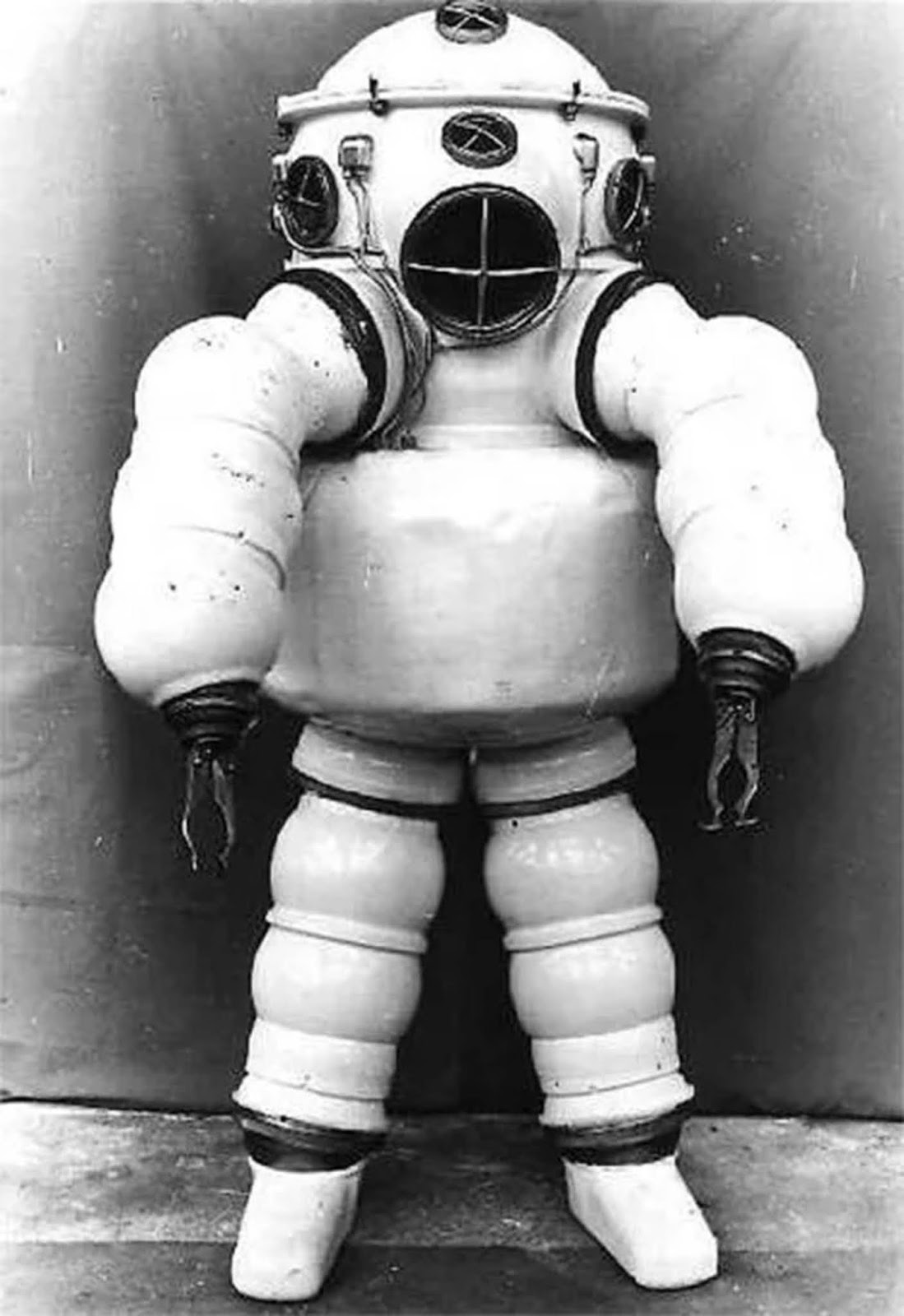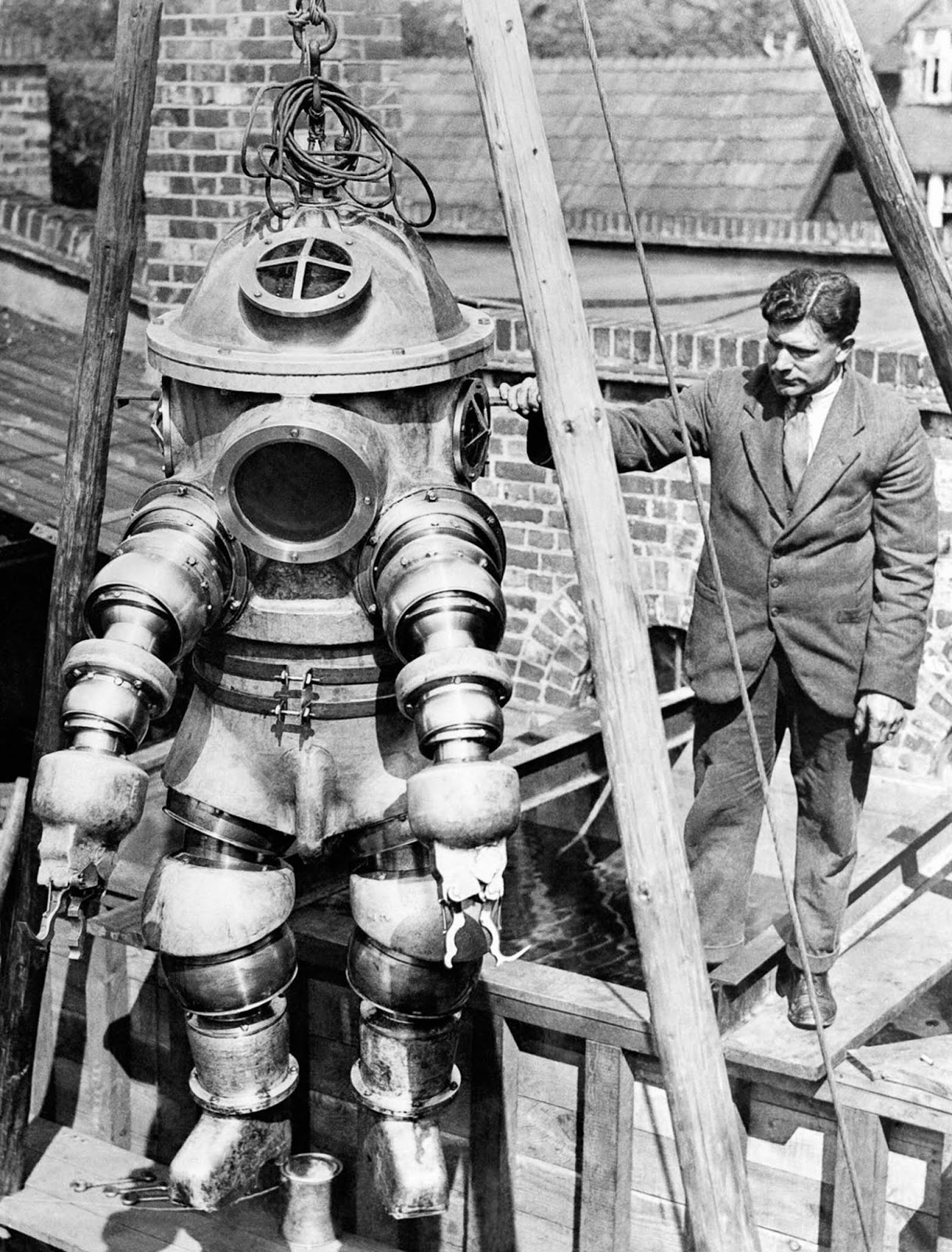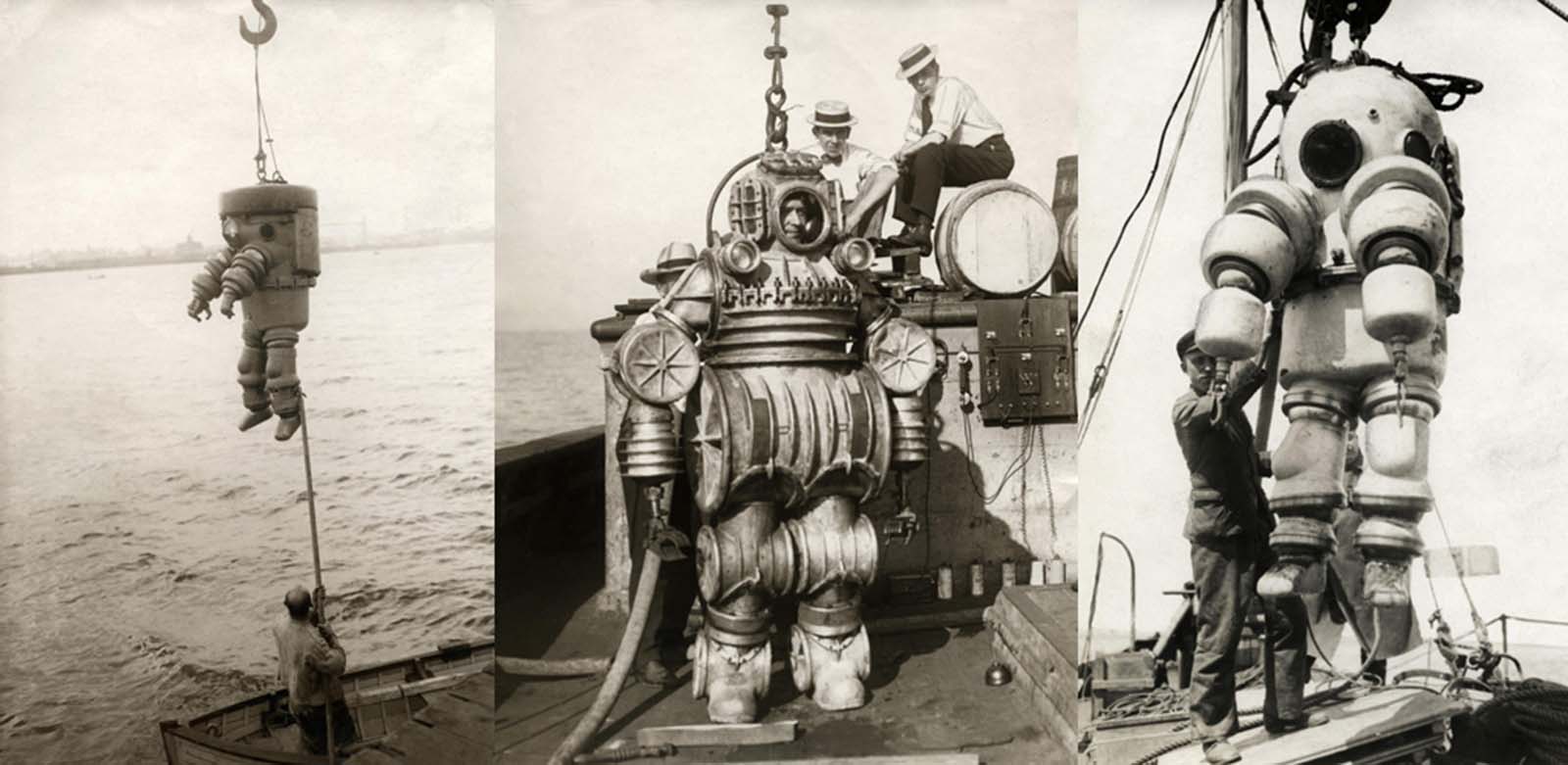The initial drive for the creation of diving suits was to aid salvage missions, at a time when many ships (carrying many treasures) were lost to the ocean on perilous journeys. The first diving suits were designed in the 1710s and in 1715, English inventor John Lethbridge created the first fully-enclosed suit, consisting of watertight sleeves, a pressurized air-filled barrel, and a viewing hole. In 1797 in Poland, Karl Heinrich Klingert was the first to develop a full-body diving suit made of a metal helmet, wide metal girdle, and pants, and a vest made of waterproofed leather. With the use of a pump turret, air could be supplied to the diver via a long, weighted tube. The next greatest leap in diving technology came in 1837 with the advent of “heavy footers” – diving suits made to encase the diver in thick waterproof leather, a heavy metal helmet, and weighted boots. The diving helmets developed for this were used for over a century. The diving helmet suit made it possible for divers to move underwater more freely. In 1878, Alphonse and Theodore Carmagnolle in Marseille, France, developed an armored suit with twenty small portholes and articulated limbs, which they were granted a patent for. It weighed 838 pounds. This was the first human-shaped atmospheric diving suit (ADS) – meaning that the pressure inside the suit was one atmosphere – the same as at the surface – and therefore the diver wouldn’t have to worry about the dangers of decompression. Sadly, the suit never worked properly and the joints were never completely waterproof. The original suit is now on display at the French National Navy Museum in Paris. The same year, Henry Fleuss of London became the very first scuba diver with his invention of the first self-contained underwater breathing apparatus (SCUBA) using compressed oxygen. He was granted a patent in 1878, and it eliminated the need for a diver to rely on surface-supplied air. A rubber mask was connected to a rubber airbag, copper oxygen tank, and a scrubber for removing CO2 so that exhaled air could be re-breathed. This device was originally developed to save trapped miners, but immediately was recognized for its potential underwater. While it did limit the divers working depth due to the danger of oxygen toxicity, this was a revolutionary design. The British Navy was the first to train and recruit divers for their purposes, and the US Navy followed suit in a training program in 1882. However, there was little official interest in this new technology and it wasn’t until 1898 that USS Maine sank that US divers could prove their use and value. It was then that they were able to recover the ships’ cipher code, keeping it from falling into the hands of the enemy. (Photo credit: Wikimedia Commons / RHP / Library of Congress). Notify me of new posts by email.
Δ Subscribe





















